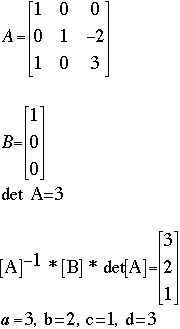

The molar mass of AlCl 3 is 133.33 g/mol, which we have to invert to get the appropriate conversion factor: We will do this in two steps: convert the mass of AlCl 3 to moles and then use the balanced chemical equation to find the number of moles of HCl formed. How many moles of HCl will be produced when 249 g of AlCl 3 are reacted according to this chemical equation?ĢAlCl 3 + 3H 2O(ℓ) → Al 2O 3 + 6HCl(g) Solution Sometimes the answer may be slightly different from doing it one step at a time because of rounding of the intermediate answers, but the final answers should be effectively the same. The units still cancel appropriately, and we get the same numerical answer in the end. However, it is mathematically equivalent to perform the two calculations sequentially on one line:

In this last example, we did the calculation in two steps. So, we will get 1.159 mol of AlCl 3 if we react 123.2 g of Cl 2. Using this conversion factor with the molar quantity we calculated above, we get: The numbers in the conversion factor come from the coefficients in the balanced chemical equation:

Now that we have the quantity in moles, we can use the balanced chemical equation to construct a conversion factor that relates the number of moles of Cl 2 to the number of moles of AlCl 3. We must invert this fraction so that the units cancel properly: The molar mass of Cl 2 (which we get from the atomic mass of Cl from the periodic table) is 70.90 g/mol.
#Balance the equation calculator how to#
We know how to do this by simply using the molar mass of Cl 2 as a conversion factor. So to use the balanced chemical equation to relate an amount of Cl 2 to an amount of AlCl 3, we need to convert the given amount of Cl 2 into moles. How can we determine how many moles of AlCl 3 we will get when the reaction is complete? First and foremost, chemical equations are not balanced in terms of grams they are balanced in terms of moles. We can add that conversion factor as another step in a calculation to make a mole-mass calculation, where we start with a given number of moles of a substance and calculate the mass of another substance involved in the chemical equation, or vice versa.įor example, suppose we have the balanced chemical equation: Recall that the molar mass can be determined from a chemical formula and used as a conversion factor. Mole-mole calculations are not the only type of calculations that can be performed using balanced chemical equations.


 0 kommentar(er)
0 kommentar(er)
